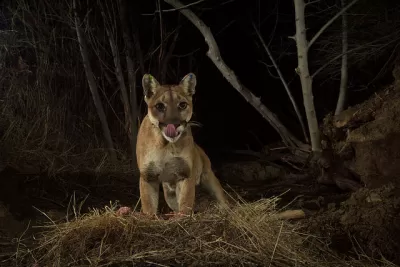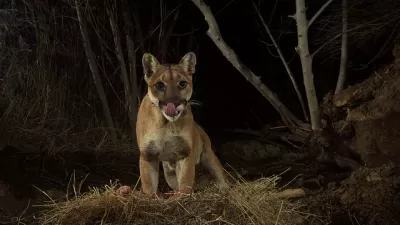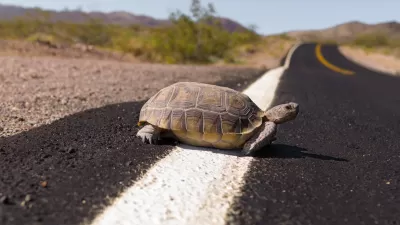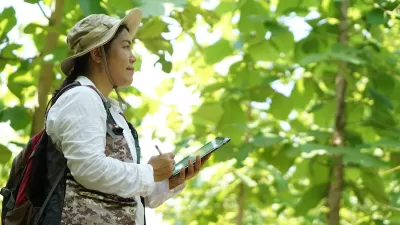The planned wildlife bridge spanning an eight-lane freeway will be the world's largest and most ambitious project of its kind.

Southern California's wildlife will soon have a safer way to travel, reports Alissa Walker, thanks to a planned wildlife crossing that will help the region's mountain lions cross the eight-lane 101 freeway, expand their habitat, and increase their genetic diversity.
With the last $10 million secured through Governor Newsom's new budget, the $87-million project, the largest of its kind in the world, is now fully funded and will break ground this spring. The bridge will span Liberty Canyon in the western part of Los Angeles, connecting two portions of the Santa Monica Mountains National Recreation Area, the nation's largest urban national park. Walker notes that the design features materials designed to deflect headlights and insulate its travelers from traffic noise, as well as native landscaping to attract pollinators.
Popular in places like Canada and Australia, wildlife crossings make travel safer for migrating animals and enhance biodiversity in habitats fractured by roads and urban development. According to Beth Pratt, California regional executive director for the National Wildlife Federation, reweaving together fragmented habitats is also an effective climate resiliency strategy. Meanwhile, wildlife crossings also make roads safer for humans, saving lives and thousands of dollars in vehicle repairs.
Wildlife crossings were allocated $340 million in federal funding in the infrastructure bill, which could prompt more similar projects around the country.
FULL STORY: World’s Largest Wildlife Crossing Is Finally Underway in Los Angeles

Planetizen Federal Action Tracker
A weekly monitor of how Trump’s orders and actions are impacting planners and planning in America.

Maui's Vacation Rental Debate Turns Ugly
Verbal attacks, misinformation campaigns and fistfights plague a high-stakes debate to convert thousands of vacation rentals into long-term housing.

San Francisco Suspends Traffic Calming Amidst Record Deaths
Citing “a challenging fiscal landscape,” the city will cease the program on the heels of 42 traffic deaths, including 24 pedestrians.

Defunct Pittsburgh Power Plant to Become Residential Tower
A decommissioned steam heat plant will be redeveloped into almost 100 affordable housing units.

Trump Prompts Restructuring of Transportation Research Board in “Unprecedented Overreach”
The TRB has eliminated more than half of its committees including those focused on climate, equity, and cities.

Amtrak Rolls Out New Orleans to Alabama “Mardi Gras” Train
The new service will operate morning and evening departures between Mobile and New Orleans.
Urban Design for Planners 1: Software Tools
This six-course series explores essential urban design concepts using open source software and equips planners with the tools they need to participate fully in the urban design process.
Planning for Universal Design
Learn the tools for implementing Universal Design in planning regulations.
Heyer Gruel & Associates PA
JM Goldson LLC
Custer County Colorado
City of Camden Redevelopment Agency
City of Astoria
Transportation Research & Education Center (TREC) at Portland State University
Jefferson Parish Government
Camden Redevelopment Agency
City of Claremont





























